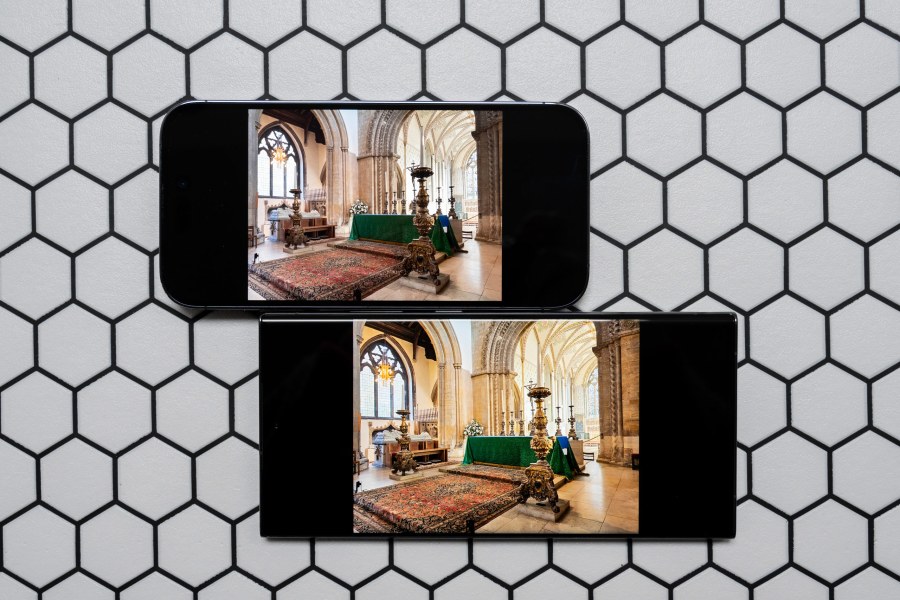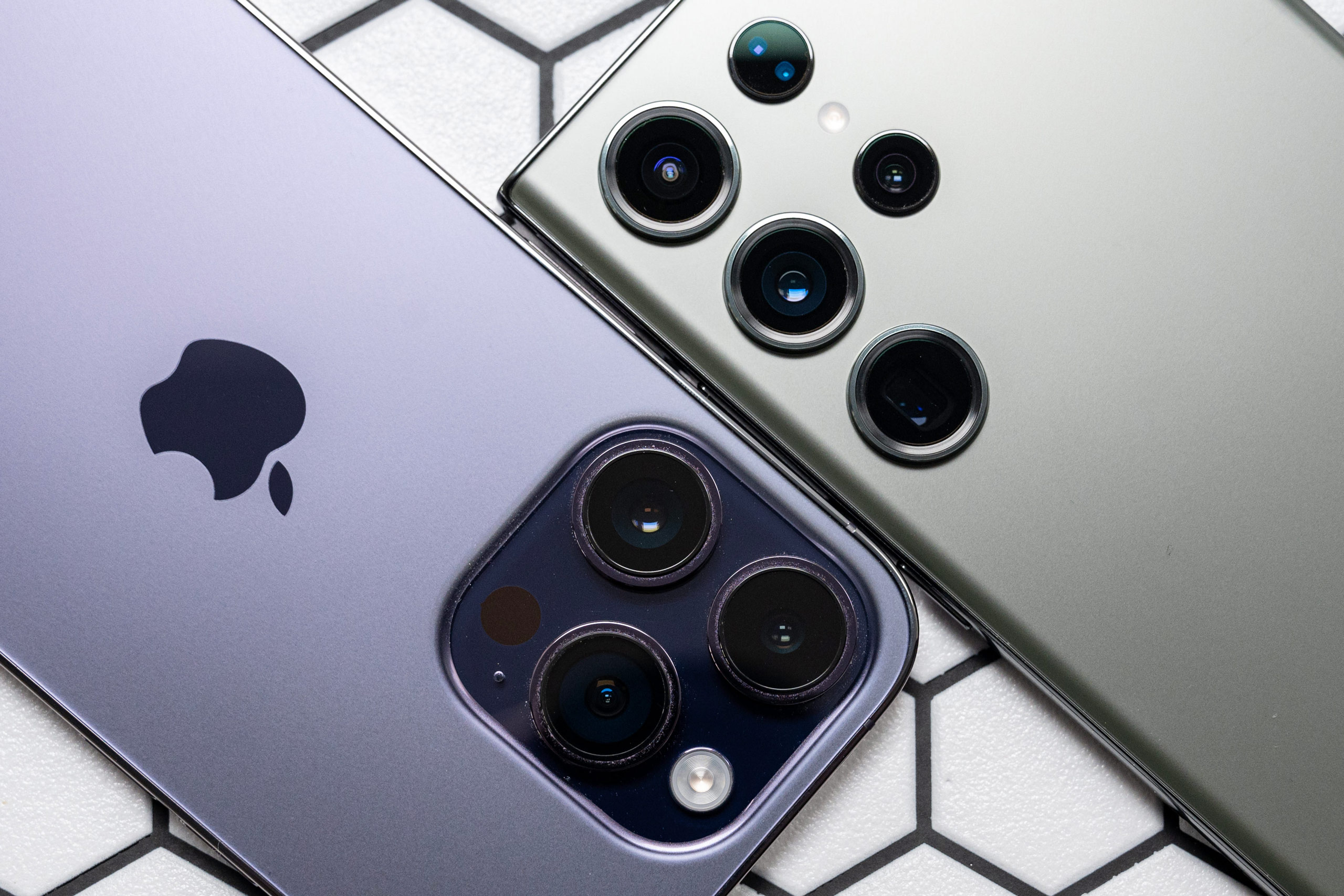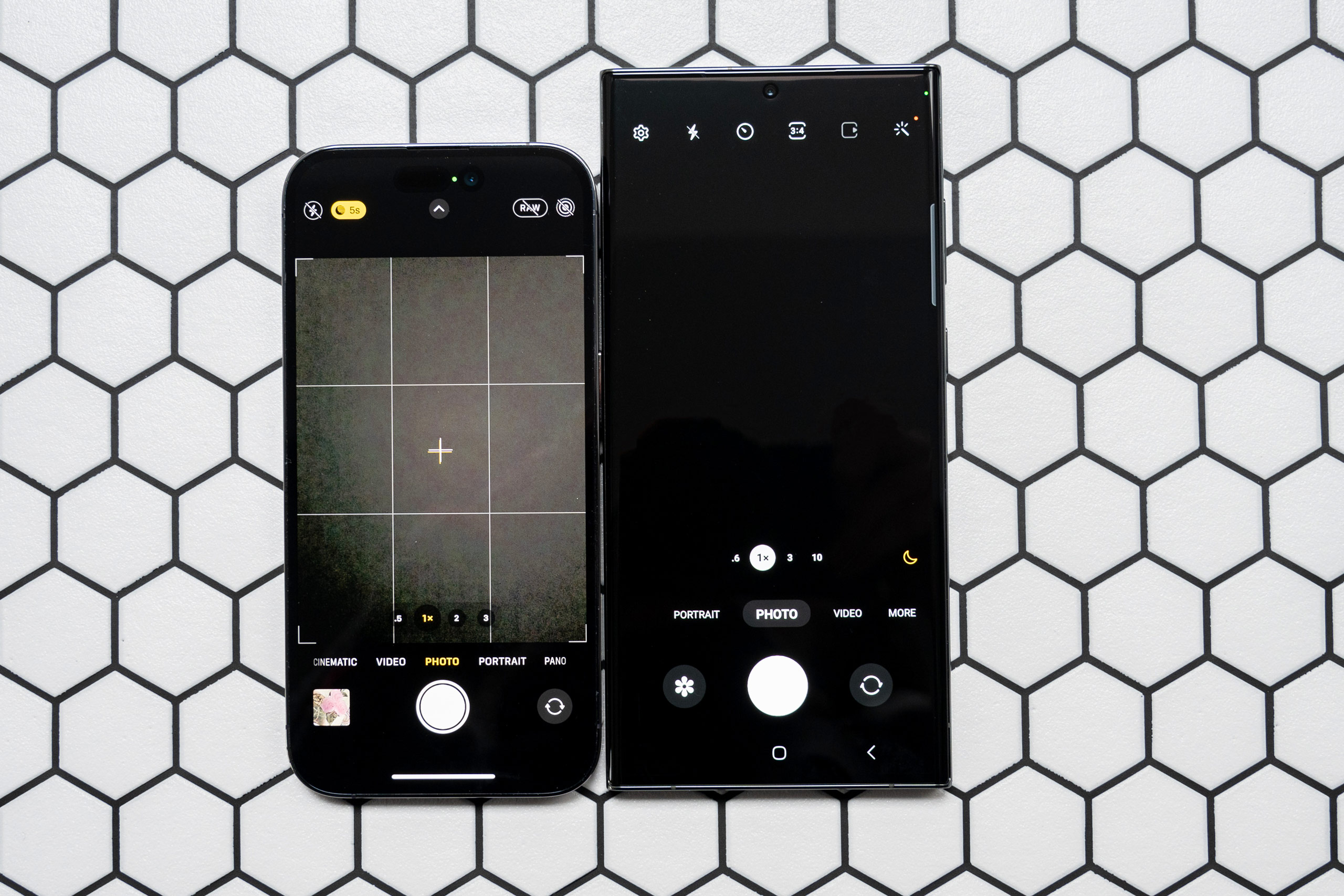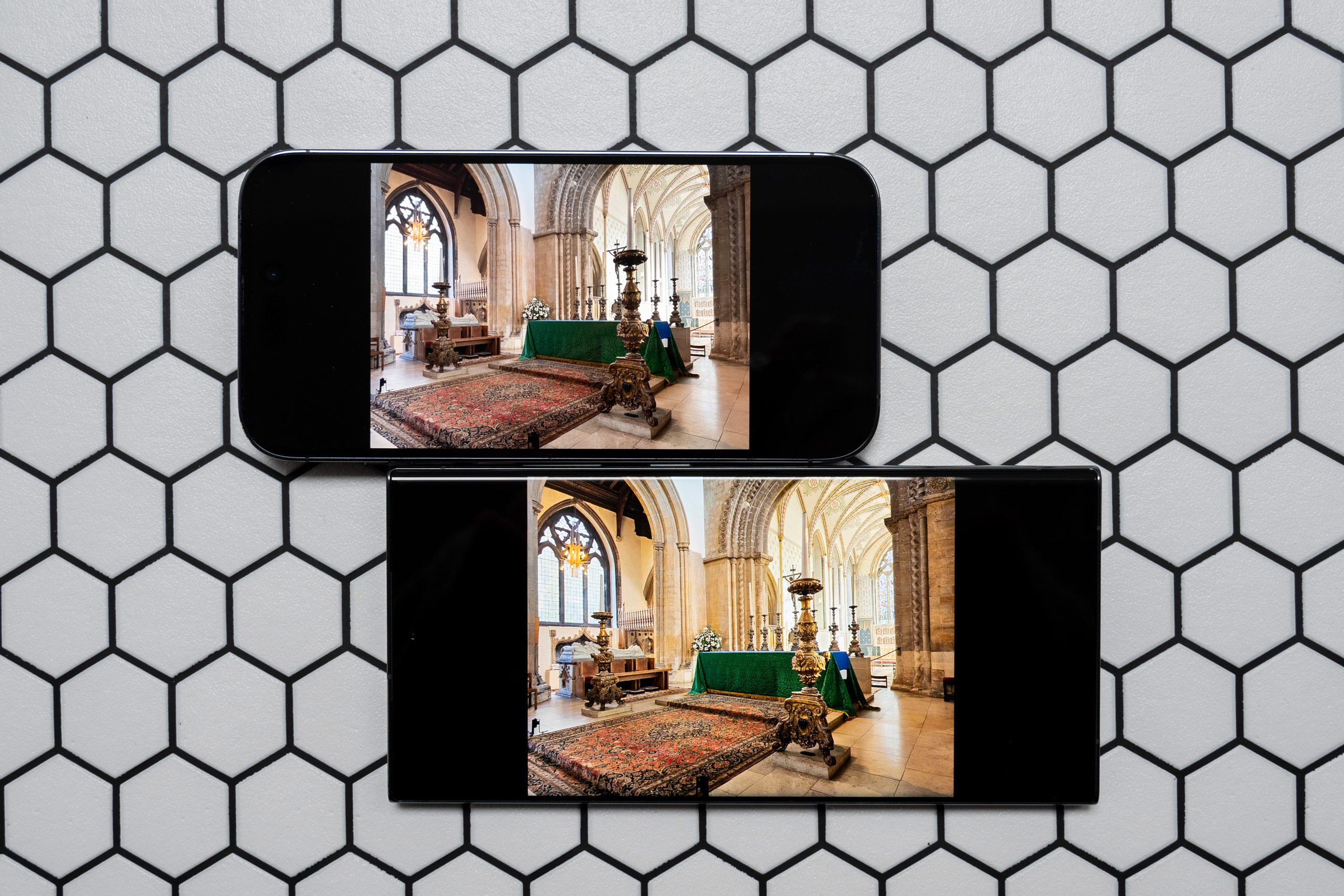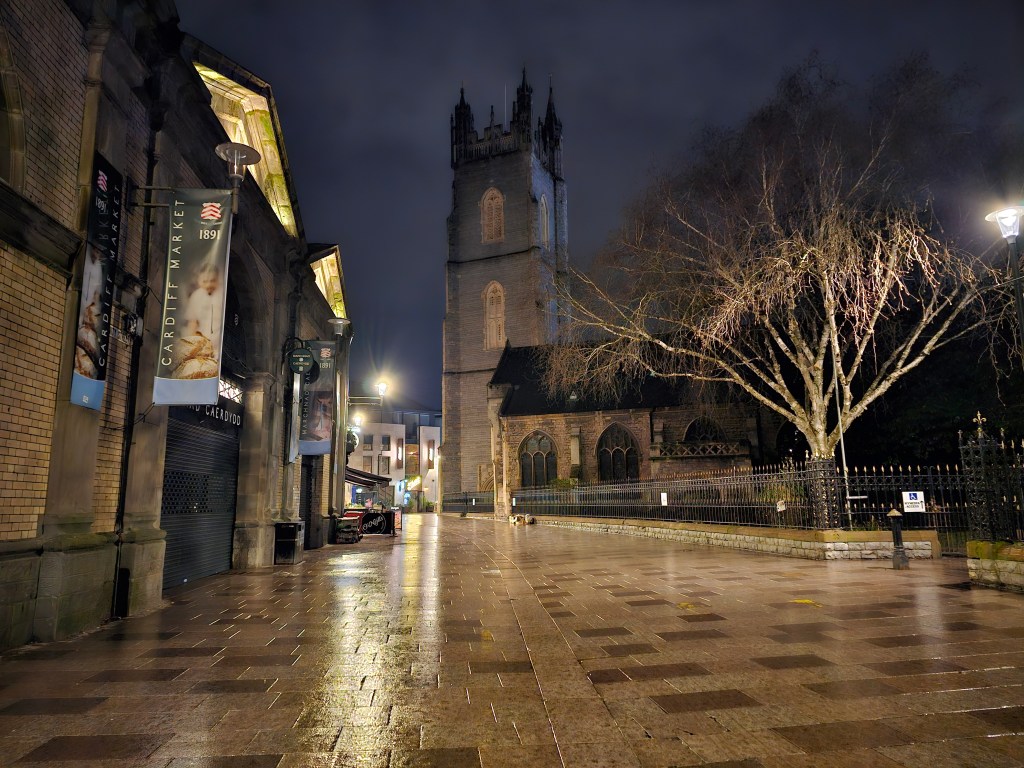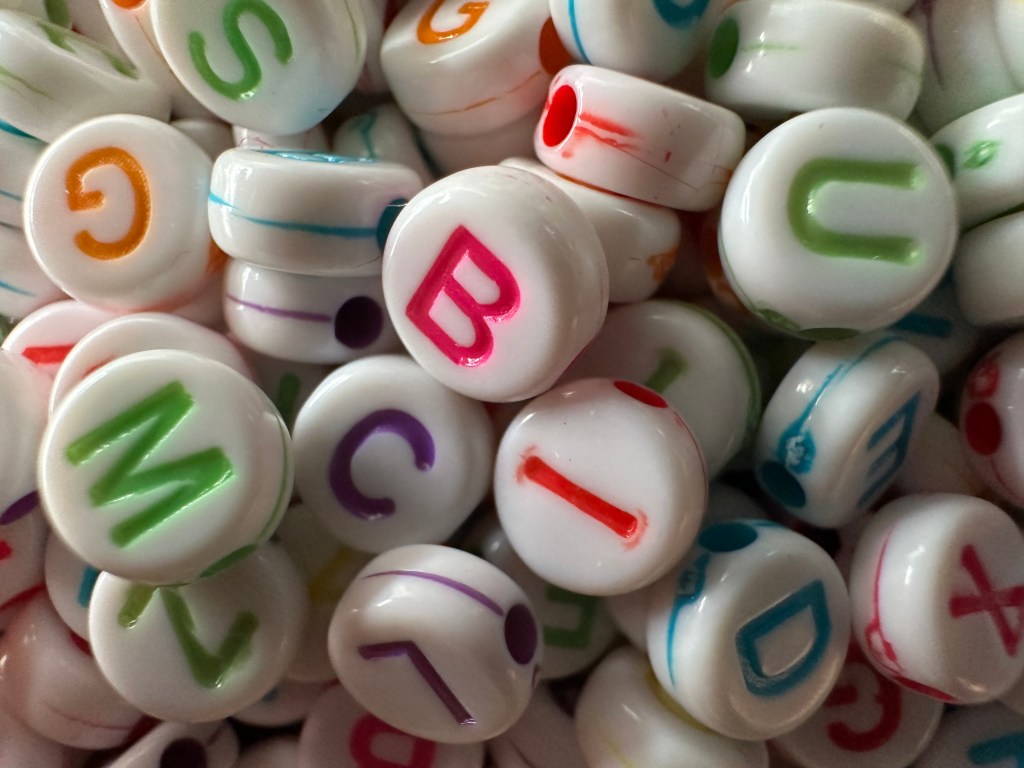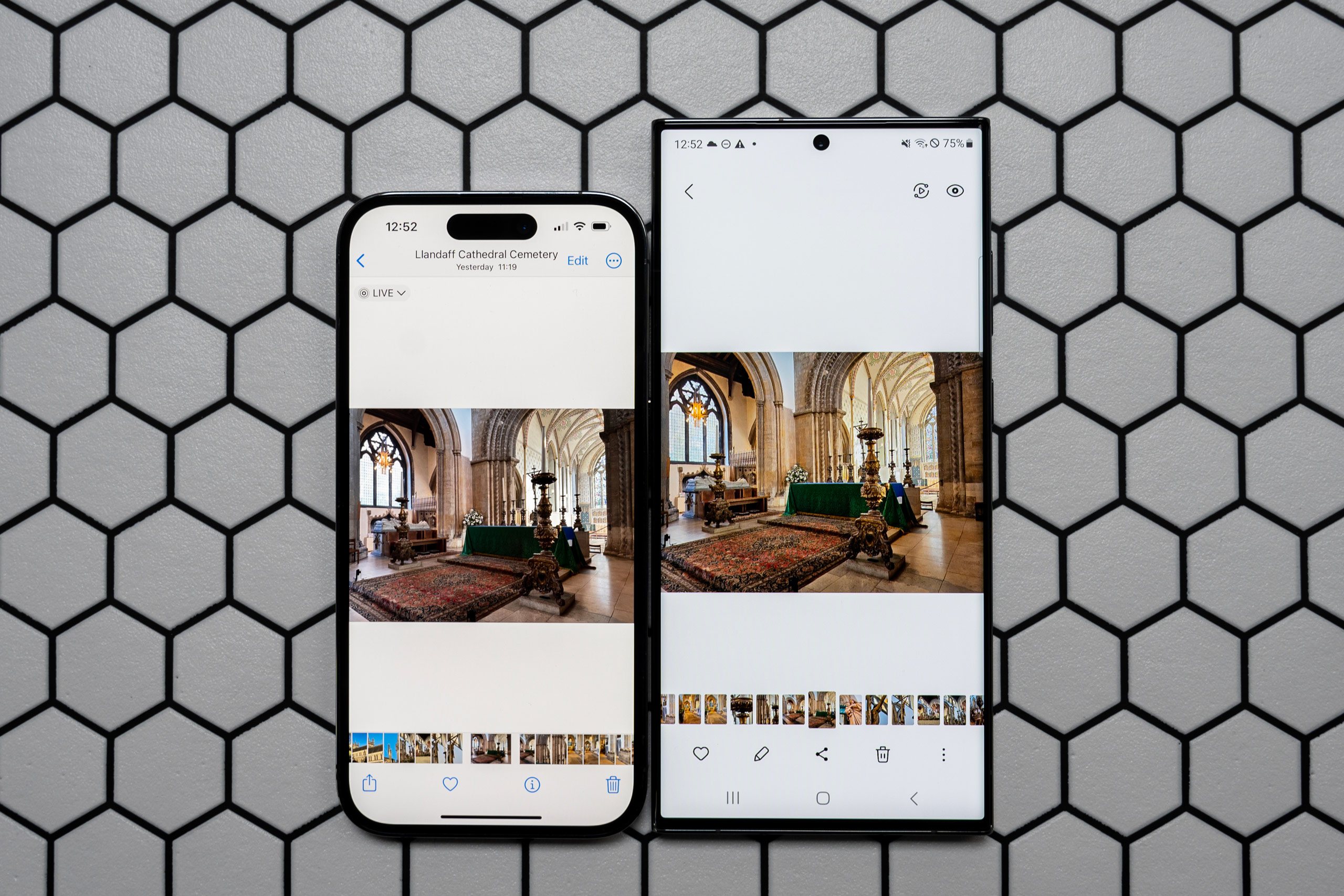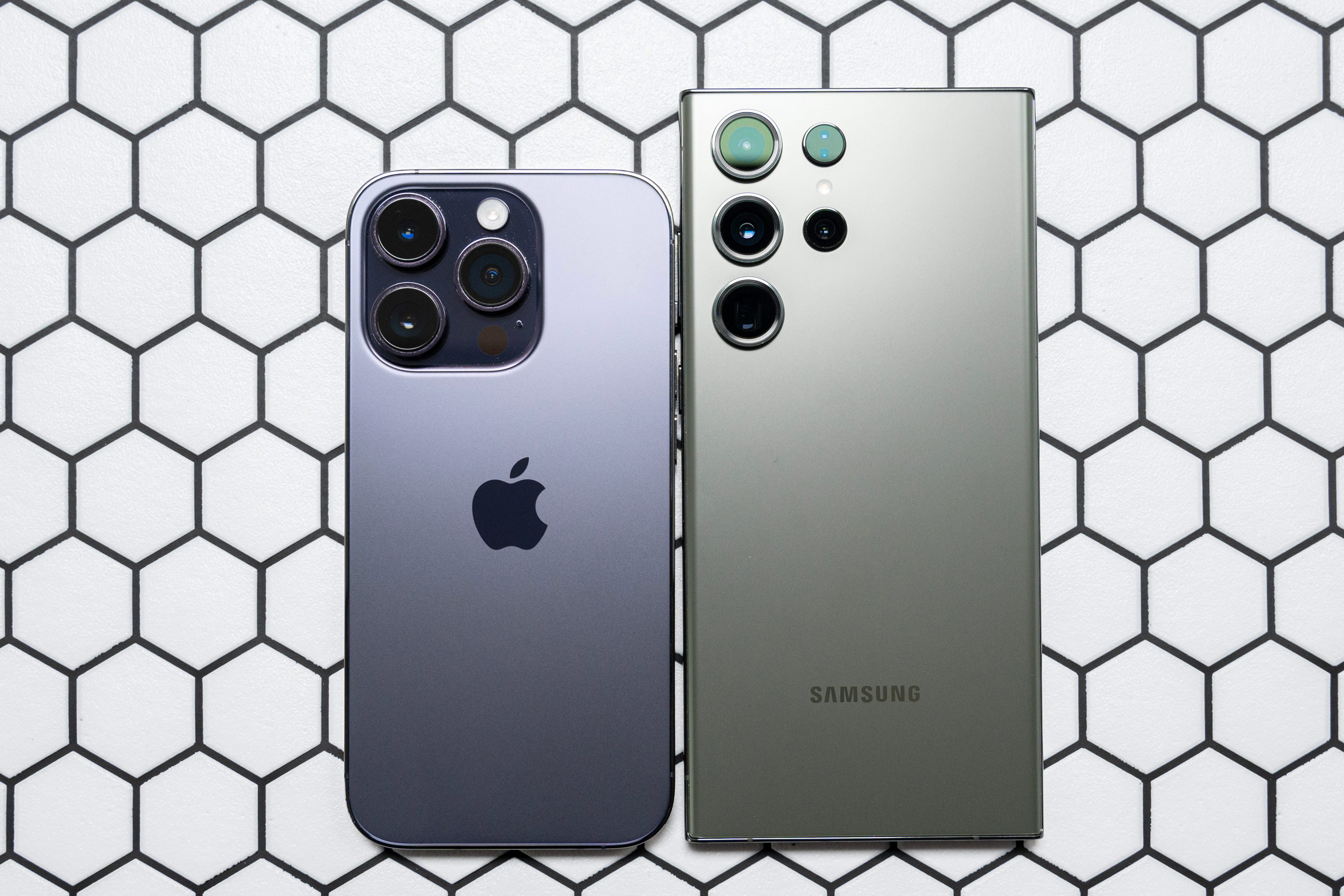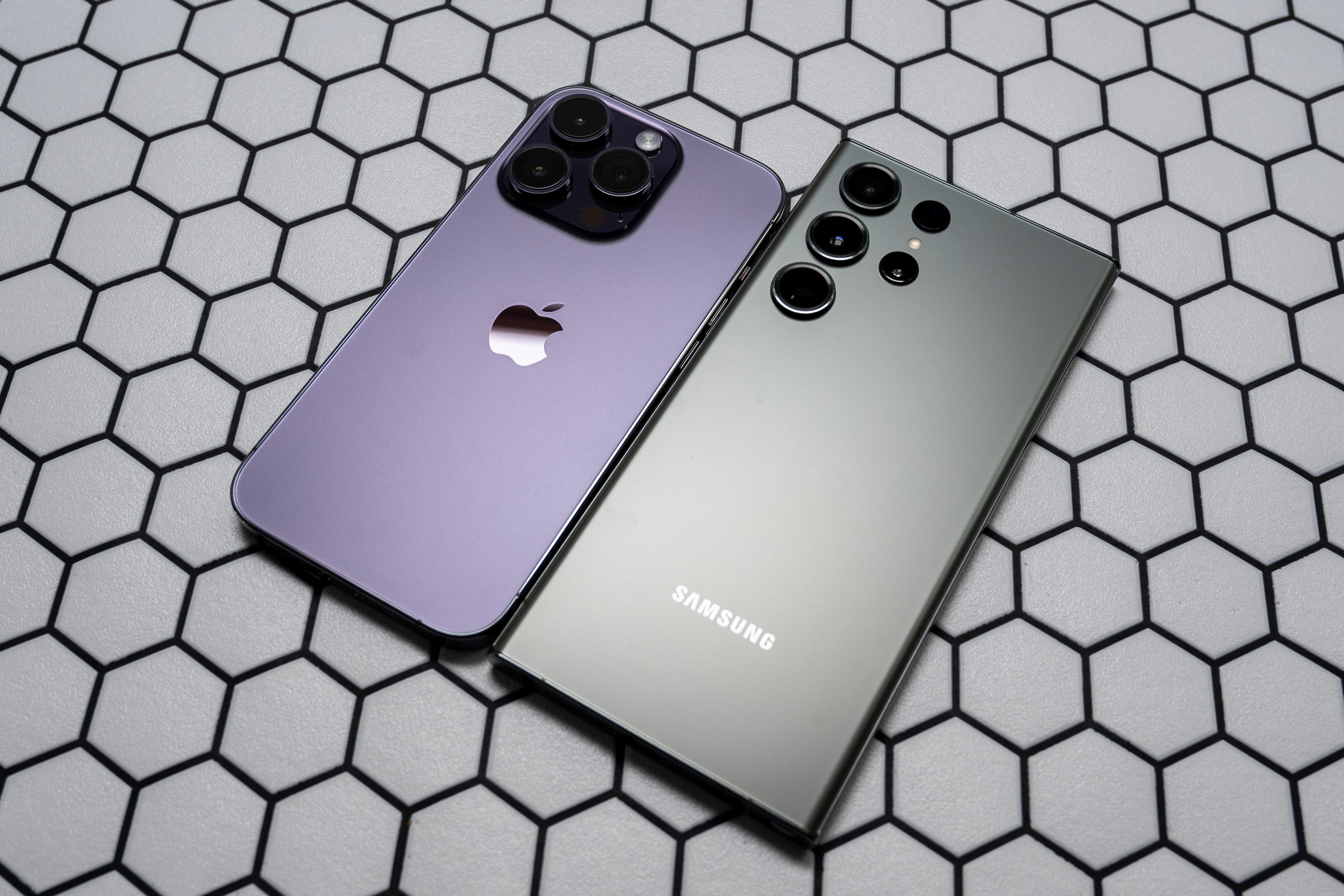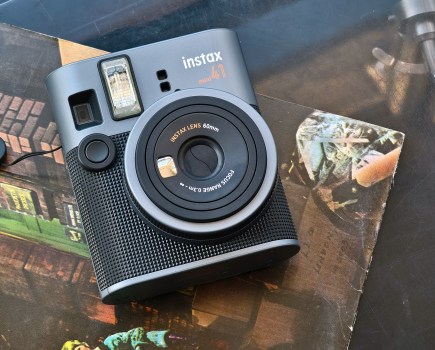Samsung and Apple are the two biggest smartphone manufacturers. Each boasts huge sales and has loyal fans who enthuse over the latest and best flagship. We take a close look at the iPhone 14 Pro and Samsung S23 Ultra in a head-to-head to find out which is the best camera phone for photographers.
Judging by the prominence of the cameras in their marketing, the high quality of these in their top-end models is now the biggest selling point for these heavyweights. Having reviewed both the Samsung S23 Ultra and the iPhone 14 Pro, we know they’re both excellent performers in photography. And each has a sophisticated range of controls for all types of photographer…
Which is best? Read on…
Camera Specs
Neither iPhone 14 Pro nor the Samsung Galaxy S23 Ultra differ too much from their predecessors. If you’ve used an iPhone 13 Pro or a Samsung S22 Ultra then you’ll know what to expect. There are some new AI features available to several Samsung models, including the S22 and S23, which include photography: none of which affect this comparison, however.
With the iPhone 14 Pro you get a triple-lens configuration, comprising a standard lens, an ultra wide (0.5x) and a telephoto (3x). For the first time in an iPhone, the pixel count has risen above 12MP, as the standard sensor has 48 megapixels. Both the ultra-wide and the telephoto stick with the 12MP options.
Having a higher resolution main sensor means that there’s also a selectable “2x” option in the native camera app, even though there is no 2x lens (the phone will crop into the full resolution to provide a 2x equivalent). A digital zoom is also available beyond 3x, going up to 15x.
The Samsung S23 Ultra has four lenses (up from three). Here we have a main lens, an ultra-wide (0.6x) and two telephoto options (3x and 10x). There’s also a “Space” zoom option which sees the digital zooming capability rise up to 100x, with a 30x also selectable on screen.
The big news here with the S23 Ultra is the ridiculously high pixel count for the main sensor: a whopping 200 megapixels. Samsung has been no stranger to high pixel counts, with the S22 Ultra boasting a 108MP sensor, but this takes it into another league. The additional sensors for the Samsung are 12MP (ultra wide) and 10MP (3x and 10x).
It’s worth noting that, although pixel count is higher with both the iPhone 14 Pro and the Samsung S23 Ultra main sensors, images will still be output at 12MP, thanks to pixel binning. You can record at higher resolutions with the use of special modes.
The main (1x) lenses for both the iPhone and the Samsung are very similar. The iPhone 14 Pro has a 24mm-equivalent focal length and an f/1.78 aperture, while the Samsung S23 Ultra has an ever so slightly wider 23mm-equivalent focal length and an f/1.7 aperture. Both have optical image stabilisation.
The ultra-wide lenses on both models are 13mm equivalents, and both have an aperture of f/2.2.
For the 2x lens, the iPhone 14 Pro’s is 72mm equivalent, with an aperture of f/2.8, while the Samsung’s is 70mm with an aperture of f/2.4.
The Samsung’s additional 10x lens has an equivalent of 230mm, but the aperture drops down to f/4.9.
The Samsung seems a superior spec. Its extra lens, higher resolution main sensor and slightly wider aperture for the 3x lens give it the edge on paper. Let’s see how they compare in real-world shooting…
Camera apps and shooting modes
As has been the case for several generations now, the iPhone 14 Pro’s native shooting app is relatively limited in comparison to the Samsung S23 Ultra.
With the iPhone 14 Pro, you get a standard shooting mode, with other options including Portrait, Video and “Cinematic” Video. There is no “Pro” or “Advanced” option giving you control over certain shooting parameters such as ISO, though you can record in raw format if you’d prefer and make adjustments afterwards. There are plenty of third-party apps available if you want this kind of control, too.
Both smartphones offer a night mode, but with the iPhone it’s an automatic function that activates when low light levels are detected. The Samsung will operate in the same way, but you can also select it manually if you prefer.
Both also have a macro mode, but this time both are automatic functions that start when you bring the smartphone close to a subject – with both switching to the ultra-wide lens to record close-ups.
The S23 Ultra has additional shooting options directly in the native camera app. A “Pro” mode gives control over a wide array of shooting settings. It’s also here where you’ll be able to record in raw format with the S23 Ultra (note, you can’t shoot in raw format in the standard shooting mode).
Also available for the S23 Ultra is an “ExpertRAW” app which is separate but can be accessed via the normal native camera app. Here you get even greater control over shooting, as well as the ability to connect to Lightroom mobile if you have an Adobe CC subscription.
The Samsung S23 Ultra clearly affords much more flexibility within the native camera app, perhaps making it more appealing to enthusiast photographers who want a high degree of control.
General image quality
When we look at general images taken with these smartphones, both take excellent photos, particularly in good light.
Both are capable of producing a good overall impression of detail, and record impressively vibrant colours. In the standard shooting mode, the Samsung is a little punchier than the iPhone, which gives quite an attractive look. However, it is a little less realistic than the iPhone.
We can also see this under artificial light, where the Samsung’s images come out a little yellower than the iPhone’s – but some might find the iPhone’s colour a little cold.
The differences between the two here are minimal and perhaps only evident when looking directly at two shots of the exact same scene side by side – which is not something that most ordinary users will be doing, of course.
As we’d expect, the Samsung offers better zooming capability, since it has that extra lens. To get 10x from the iPhone you’d need to digitally zoom, and that produces lower-quality results.
The 30x digital zoom option on the Samsung is actually fairly decent, and while the 100x “Space Zoom” is essentially a marketing gimmick, there might be the odd occasion where being able to zoom that far trumps the idea of high image quality.
It’s easier to see more obvious differences when we look at specific subjects, as below.
Low light
Both of these smartphones put in an excellent performance in low light. Neither will disappoint.
As we’d expect, the best results from both come when using the 1x lens. Here we can see an excellent overall impression of detail and attractive colours from each.
In our example shot here, the Samsung’s is a little less detailed under close inspection, but it’s also a little cleaner in terms of noise – while the sky has been reproduced more dramatically.
The iPhone’s seem to have more details in some areas, such as the brickwork on the church, but it’s perhaps an overall ‘flatter’ look.
It’s a similar situation when comparing the ultra-wideangle lenses, with both being very good in these shooting conditions. The iPhone has perhaps a touch more detail, but the results from the Samsung are slightly more attractive to look at.
The 3x lens has done a good job in both situations, with again the Samsung giving the more attractive appearance. The Samsung’s 10x lens has struggled somewhat in the low light – probably not surprising considering the f/4.9 narrow aperture. It beats the iPhone on this count, only as it has nothing to offer there.
There’s really not a lot in it when comparing these two in low light and it might come down to personal preference.
Macro
As mentioned, both smartphones have a macro mode, which automatically activates when it detects you are very close to a subject.
When this happens, either phone will switch to shooting with the ultra-wide lens. This can produce less favourable results in lower-light situations. Unless you’re very close to the subject, it can be better to switch it off and use the main lens instead.
The macro focusing on each phone can be switched off at the tap of a button to compare appearance directly.
Note that shooting in high-resolution mode, the Samsung won’t activate macro focusing – so will not support extreme close-ups in high resolution.
Either way, both produce excellent results which show plenty of detail. You can be practically touching the subject and both devices still focus.
Although both are very good, the Samsung S23 Ultra provides the brighter and crisper results – especially if light levels are a little lower.
Portrait

Both smartphones have a “Portrait” mode, which is designed to emulate the effect of a shallow depth of field. They can be used for both human and non-human subjects.
With the iPhone 14 Pro you can shoot photos at either 1x, 2x or 3x, depending on how much background you want to show. For the Samsung S23 Ultra you get just a 1x or a 3x option.
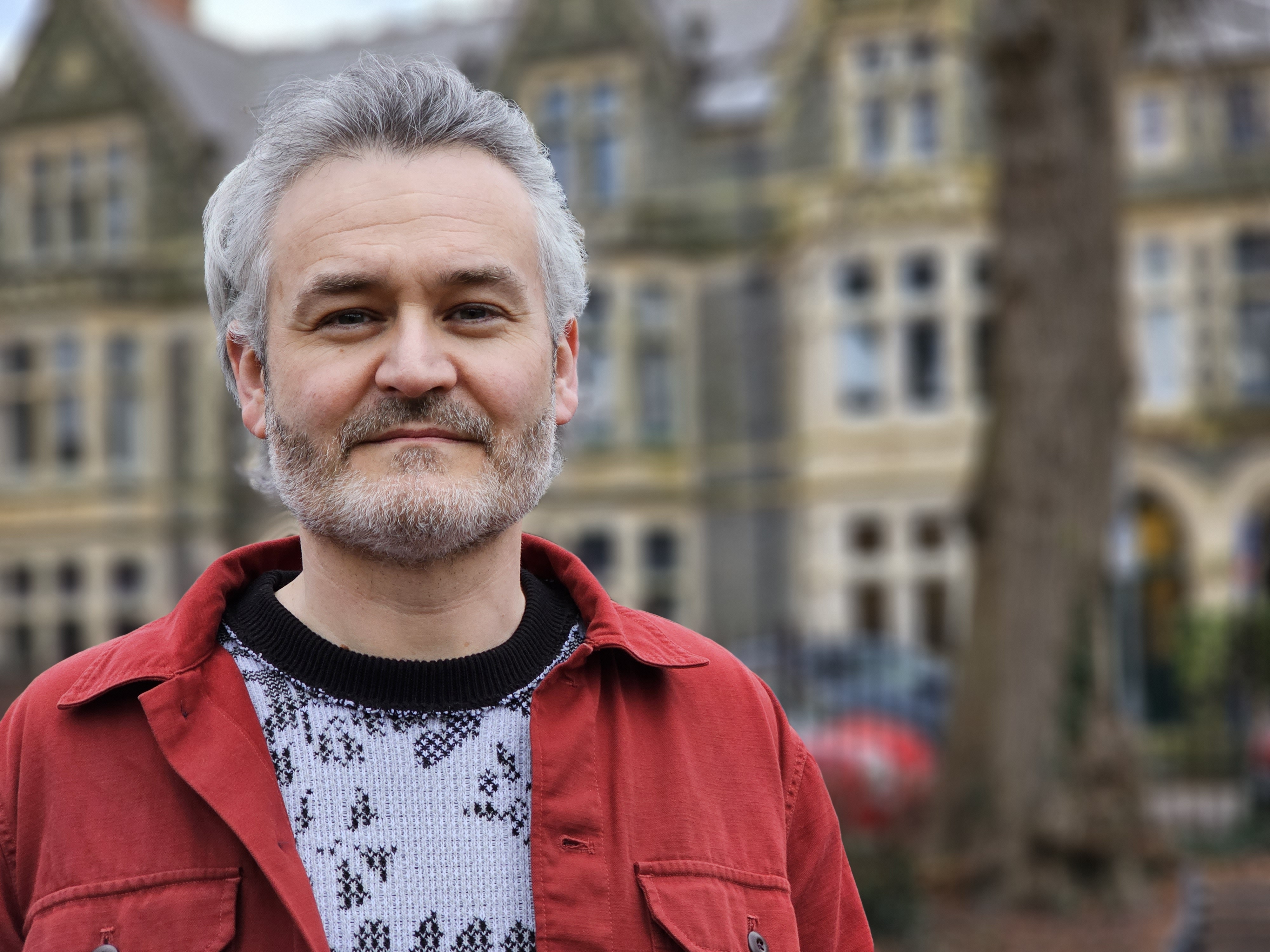
Both produce great results in human and non-human subjects. The Samsung S23 Ultra has produced better results here, being more realistic and more flattering to the subject. At 3x it has done a better job with the tricky outline of the hair, and the colours look great. It does appear to have improved greatly from the S22 Ultra, which we found to be less favourable for portraits than the iPhone 14 Pro.
That said, a view of those from the iPhone’s in isolation are still impressive.
Video
Both the iPhone 14 Pro and the Galaxy S23 Ultra have excellent specifications for video.
Only those insistent on 8K recording will need the S23 Ultra. It’s been increased to 30fps compared to the S22 Ultra, but remains a niche demand.
As such, 4K is where we’ll compare them more readily, with both producing great results at 4K/60p. Both offer advanced stabilisation options, with the Samsung’s known as “SuperSteady” and the iPhone’s “Action Mode”. Both are standard, too.
If you’re an advanced video shooter, the Samsung S23 Ultra has a “Pro Video” mode which gives you more control over shooting parameters, though the iPhone 14 Pro has a “ProRes” mode which is designed for better colour and less compression.
Both create excellent video, but with its extra lenses, the Samsung’s is better for zooming than the iPhone.
There are also other video modes, including slow motion and shallow depth of field effect. With the iPhone 14 Pro that’s called “Cinematic” and the Samsung S23 Ultra it’s “Portrait” video. In use, the iPhone’s gives a slightly more natural look, with the S23 Ultra’s being a touch unrealistic at times.
Screen and Design
The iPhone 14 Pro has a choice of two screen sizes: a 6.1in screen, or a 6.7in screen. Both have exactly the same camera setup. The smaller phone is more pocket-friendly, and much easier to use for other phone functions such as typing emails and and so on. You can use the 6.1in version one-handed quite easily (assuming averagely sized hands).
Meanwhile, the Samsung S23 Ultra is an unwieldy 6.8in. This is pretty much impossible to use one-handed (same hands!), which will be less appealing to some.
That said, the ultra-large screen is fantastic for viewing photos and videos, which really pop on this device. If you place the iPhone 14 Pro Max and the Samsung S23 Ultra next to each other, there’s not a huge amount of difference in terms of screen quality, although the S23 Ultra has a slightly higher resolution than the iPhone 14 Pro Max.
Both have IP68 water and dustproof ratings, meaning they can easily withstand rain, or even being fully submerged in shallow water. The Samsung S23 Ultra has a Gorilla Glass Victus 2 screen, while the iPhone 14 Pro has a Ceramic Shield screen. Both should withstand ordinary scratches and dents quite easily, though of course it’s always worth investing in a case.
Aesthetically, the iPhone 14 Pro has a boxier / squarer design than the S23 Ultra, which is sleeker. This is a matter of personal preference, ultimately. We just about prefer the S23 Ultra. You’ll have your own idea.
Battery Life and Capacity
Apple doesn’t like to release detailed specifications for several features, including its batteries. However, we see from the quoted video playback life of 23 hours (iPhone 14 Pro) or 29 hours (iPhone 14 Pro Max) that it’s similar to the S22 Ultra’s 5000mAh battery. This is, apparently, capable of 26 hours of video playback.
More importantly, in real-world usage we’ve found that both models easily last a full day when using the phone relatively normally – a mixture of checking emails, taking pictures, recording video, browsing web pages and the like.
The S23 Ultra lasts longer than the iPhone 14 Pro, sometimes stretching long into the second day if you’re not hammering something like video recording. With the iPhone 14 Pro Max, you’ll also likely make a second day with similarly cautious use.
Both offer fast charging – a quick boost with a high-powered charger. Neither device comes with any charger of any kind, though – only a power cable. Both have wireless charging.
Regarding capacity, neither phone has an option to expand storage later. People likely to shoot lots of photo and video should invest in as much capacity as possible. With both, however, you can opt to store your pictures etc. in cloud-based servers, freeing up space on your phone.
The iPhone 14 Pro offers a minimum storage of 128GB, rising to 1TB, while the Samsung S23 Ultra’s minimum amount is 256GB, also rising to 1TB.
The S23 Ultra has less RAM (8GB vs 12GB) with the 256GB memory option. This is not something which changes between storage options for the iPhone 14 Pro – though with that model it’s worth noting that if you want to shoot 4K in ProRes video mode, you will need at least the 256GB version.
iPhone 14 Pro vs Samsung S23 Ultra: Price
We won’t find these in any budget lists, but there is some value in refurbished models and with certain network deals, now that their manufacturers themselves have ceased selling them. The iPhone 14 Pro can be found on Amazon from around $730 / £570 for the 128GB capacity model, rising slightly for 256GB versions, and $845 / £810 for 512GB. The 1TB version goes for approximately $835 / £900.
Meanwhile, for the Samsung S23 Ultra, the prices are very similar for the equivalent screen size and memory. Here, prices start about $700 / £540 for the 256GB version, up to $1,000 / £1,000 for the 1TB version.
Comparing prices like for like in terms of spec, the two are fairly evenly matched. However, for those on a strict budget, it’s possible to pick up the iPhone 14 Pro’s camera prowess for cheaper if you’re happy to go for a smaller screen size and lower storage. That would make it the more affordable option.
iPhone 14 Pro vs Samsung S23 Ultra: Verdict
As ever, picking a winner between two excellent flagship smartphones is quite difficult. It’s safe to say that if you choose either one you’ll see a nice boost to your photography if you’re upgrading from older models.
Image quality is fairly evenly matched across a variety of genres. There’s more flexibility with the Samsung with its extra zoom lens. The ability to manually change settings in the “Pro” mode will be, without doubt, appealing to serious photographers.
For specific subjects, such as low light, macro and portrait, the Samsung just about edges in front of the iPhone, though both are excellent at all three test subjects.
Video quality is great for both models, but again, the extra flexibility and options of the Samsung give it more general appeal.
How precious to you is the operating system that you are used to? Those already kitted out with Apple gear will need to be mightily impressed with the Samsung to justify switching to it. The other non-camera related influence is size and screen size. Great for some, awkward for others. The iPhone does not compromise on camera functionality for its smaller dimensions.
Overall, although not much between them, the Samsung S23 Ultra comes out on top. It produces slightly better images in a range of different shooting conditions and offers more flexibility.. We have Samsung retaining their crown and call the Samsung S23 Ultra best smartphone for photographers in 2023.
More smartphone camera comparisons:
- Samsung S23 Ultra vs Samsung S22 Ultra
- iPhone 14 Pro vs Google Pixel 7 Pro
- iPhone 14 Pro vs iPhone 13 Pro
- iPhone 14 Pro vs OnePlus 11
Related content:
- iPhone vs Android: Which is better for photography?
- iPhone 14 Pro Review: is this the best iPhone for photographers?
- Samsung Galaxy S23 Ultra Review: the ultimate camera phone?
Follow AP on Facebook, Twitter, Instagram, YouTube and TikTok.

